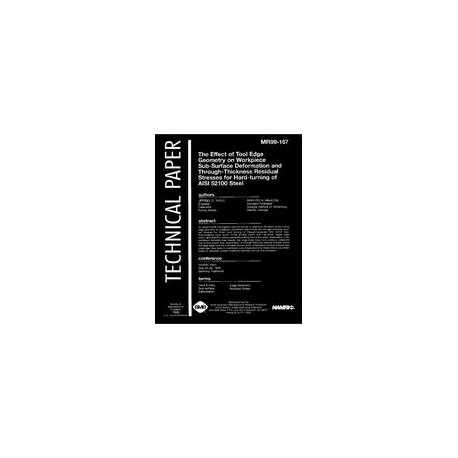Cart
0
Product
Products
(empty)
No products
To be determined
Shipping
$0.00
Total
Product successfully added to your shopping cart
Quantity
Total
There are 0 items in your cart.
There is 1 item in your cart.
Total products
Total shipping
To be determined
Total
New
Reduced price!
 View larger
View larger
 View larger
View larger
SME MR99-167
M00013362
New product
SME MR99-167 The Effect Of Tool Edge Geometry On Workpiece Sub-Surface Deformation And Through-Thickness Residual Stresses For Hard-Turning Of Aisi 52100 Steel
standard by Society of Manufacturing Engineers, 11/01/1999
Jeffrey D. Thiele ; Shreyes N. Melkote
In stock
More info

